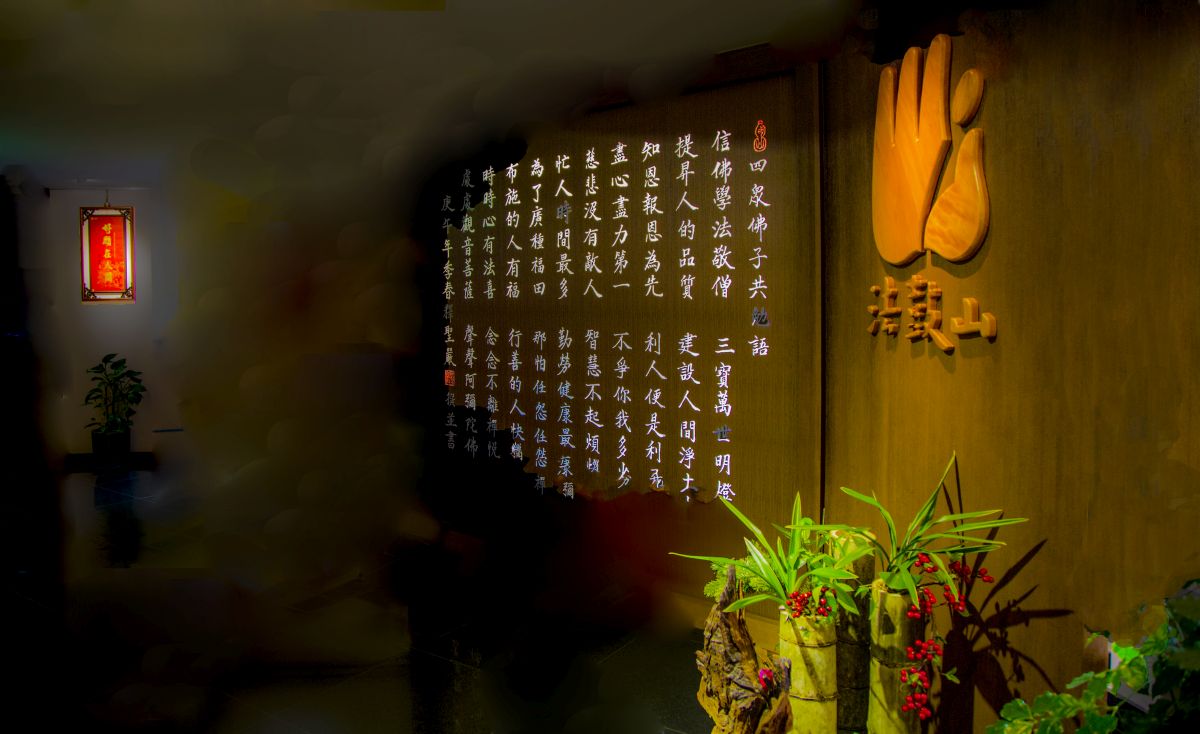Special Topics
Q2: Why do we receive a Dharma name after the refuge-taking ceremony?

After the refuge-taking ceremony, the refuge master gives you a refuge name as your Dharma name. But strictly speaking, this Dharma name has no legal effect, and you don't actually use it in your daily life.
There is no record about when Dharma names were first used. Shakyamuni Buddha's birth name was Siddhārtha Gautama (Pali: Siddhattha Gotama), which was still used by many to address the Buddha after he first became a renunciant and later attained Buddhahood, because there wasn't any "Buddhist name" or "Dharma name" given to him after his attainment of full enlightenment. In fact, "Shakyamuni Buddha," as an epithet, wasn't a Dharma name. "Shakya" was the Buddha's clan name, and the people of the clan were referred to as the Shakyas. On the other hand, "muni" was an adjective used to praise the Buddha, as someone who had eliminated all of his afflictions. Therefore, the Buddha was referred to as Shakyamuni Buddha. Again, however, this is not a Dharma name.
The First Dharma Name that Appeared in China
The earliest Dharma name that appeared in China was found in the Eastern Jin Dynasty. It was Master Dao'an who first advocated that all Buddhist monks should use the Chinese character "shi," which sounds similar to the first syllable of "Shakya," as their "monastic surname". There was no precedent for this usage. For example, after Kumārajīva became a monastic, he was still addressed as Kumārajīva, instead of "Shi Kumārajīva." Therefore, the tradition of adding "shi" before the Dharma name itself was attributed to Master Dao'an; since then, monastics have adopted using the Dharma name to mark their identity as a formal Buddhist practitioner.
In the past, only monastic members used the Dharma name; today, however, lay practitioners who have taken the Three Refugees are also given a Dharma name. In addition, just as Chinese families have their family tree and genealogy charts, so a specific character will be chosen as the first character in all family members' names of the same generation. This system was also later adopted by the Chinese Buddhist tradition, likely not too long ago. This was evident in the fact that, during the Tang Dynasty, a master and his disciples would use the same Chinese character for the first character in their Dharma names, indicating that, at the time, there was no distinction made between different Dharma lineages or generations. The system we are using today must have been influenced by the Chinese notion of family tree and genealogy. For example, if a disciple of some venerable is of the guo (果)-generation, then all the disciples of this venerable will share the same character "guo" in common, as the first character of their Dharma names.
A reminder for ourselves that we have taken the Three Refuges
A Dharma name may not have a special meaning or purpose. However, it serves as a "token of remembrance" to indicate that we have taken the Three Refugees as a formal Buddhist practitioner under the witness of some specific venerable or master. Some people have various Dharma names given by their different refuge masters. This may not be particularly problematic but some cannot even remember where they attended the refuge-taking ceremonies, let alone what their Dharma names are.
Is there any point if we cannot even remember our Dharma name (s)? Well, at least we will remember that we have taken the Three Refuges, as a Buddhist, and as a reminder for ourselves to practice diligently. Therefore, a Dharma name does not guarantee that we will always practice successfully and attain Buddhahood more quickly; there is no absolute link between the two.
Extended reading:
Q1: Does taking refuge in Buddhism automatically render me a monastic?
Q2: Why do we receive a Dharma name after the refuge-taking ceremony?
Q3: What do we take the Three Refuges?
Q4: Who can take refuge in the Three Jewels?
Q5: Will those who have not formally taken refuge in the Three Jewels have any merits when chanting Buddhist scriptures or the Buddha's name?
Q6: After taking refuge in Buddhism, is it necessary to set up a Buddhist hall or a Buddha statue at home?
Q7: How does taking refuge in the Three Jewels affect our daily lives?
Q8: Does one have to take refuge in the Three Jewels in order to formally become a Buddhist?
Q9: How many times can a Buddhist take refuge?
Resource: 佛菩薩50問 (50 Questions about Buddhas and Bodhisattvas)
Photos: 蔡全
Translation: Jonathan
Editing: Keith Brown, Chia-cheng Chang (張家誠)
